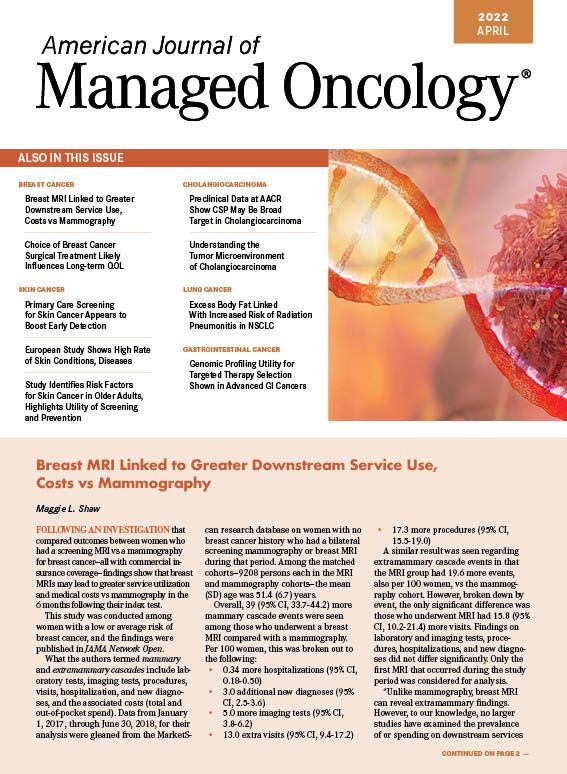Primary Care Screening for Skin Cancer Appears to Boost Early Detection
It is not yet clear what impact proactive screening might have on health care costs and survival outcomes.
Patients over the age of 35 who were screened for melanoma during primary care visits were more likely to receive an in situ or a thin invasive melanoma diagnosis compared with patients who were not offered a routine screening in a primary care setting, according to a new study published in JAMA Dermatology.
These findings suggest that implementation of primary care–based screening can help physicians catch skin cancer earlier, potentially leading to better outcomes.
The authors explained that skin cancer can be diagnosed with a simple naked-eye examination, and early diagnosis is one of the best predictors of outcomes. However, they wrote that there have been no randomized clinical trials to gauge the impact of melanoma screening in a primary care setting.
Five-year data were examined from a quality improvement program at the University of Pittsburgh Medical Center that was launched in 2014 with the goal of boosting rates of screenings during primary care visits. Under the voluntary program, physicians were encouraged to offer full skin examinations annually to patients over the age of 35 who visited the health system’s clinics for routine care. The program immediately yielded higher rates of melanoma detection and a decrease in the median thickness of invasive melanoma
However, after 1 year, there was no significant difference in the incidence of melanoma thicker than 1 mm between screened and unscreened patients.
Overall, about 600,000 patients in the data set were eligible for screening, and about one-fourth (24.3%) received at least 1 screening. Patients who were screened tended to be older; women and White patients were also more likely to be screened.
In terms of outcomes, patients who were screened had a higher likelihood of receiving an in situ or thin invasive melanoma diagnosis vs those who did not receive the screenings. In situ incidence was 30.4 vs 14.4 cases per 100,000 person-years and thin invasive melanoma was 24.5 vs 16.1 cases per 100,000 person-years. Those findings were adjusted for age, sex, and race. Thin invasive melanomas were defined as having a thickness of less than 1 mm. Patients who were screened were also more likely to get an in situ or thin-invasive interval melanoma diagnosis.
Rates of melanoma thicker than 4 mm were higher in unscreened patients, at 3.3 vs 2.7 cases per 100,000 person-years for all melanomas and 2.7 vs 1.5 cases per 100,000 person-years for interval melanomas. The authors said the overall difference in the incidence of thick melanomas did not reach statistical significance. However, they did add thaty the study design will allow them to follow these same patients over a longer period of time.
“Longer follow-up is needed to fully determine the association of screening with outcomes such as the incidence of thick melanoma, treatment cost and morbidity, distant metastasis, and death,” they wrote.
In addition, they said longer follow-up will make it easier to understand the cost-benefit ratio of this type of proactive screening.
Reference
Matsumoto M, Wack S, Weinstock MA, et al. Five-year outcomes of a melanoma screening initiative in a large health care system. JAMA Dermatol. Published online April 6, 2022. doi:10.1001/jamadermatol.2022.0253

Health Outcomes of Dually Eligible Beneficiaries Under Different Medicare Payment Arrangements
December 1st 2025Within the same physician groups, 2-sided risk in Medicare Advantage (MA) was associated with higher quality and lower utilization for dually eligible beneficiaries compared with fee-for-service MA and traditional Medicare.
Read More
